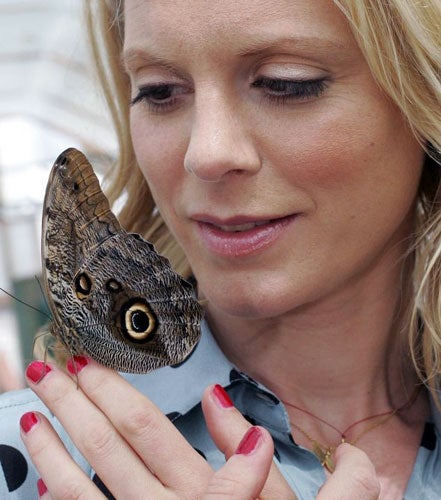Herts is where the home of butterflies is
Within earshot of the M25, a giant dome is being built to house thousands of insects and birds. Michael McCarthy reports

Your support helps us to tell the story
From reproductive rights to climate change to Big Tech, The Independent is on the ground when the story is developing. Whether it's investigating the financials of Elon Musk's pro-Trump PAC or producing our latest documentary, 'The A Word', which shines a light on the American women fighting for reproductive rights, we know how important it is to parse out the facts from the messaging.
At such a critical moment in US history, we need reporters on the ground. Your donation allows us to keep sending journalists to speak to both sides of the story.
The Independent is trusted by Americans across the entire political spectrum. And unlike many other quality news outlets, we choose not to lock Americans out of our reporting and analysis with paywalls. We believe quality journalism should be available to everyone, paid for by those who can afford it.
Your support makes all the difference.If you are seeking a blue morpho butterfly, one of the world's most spectacular and brilliantly-coloured rainforest creatures, you wouldn't normally head for St Albans. But that is about to change.
Out there in the depths of Hertfordshire, where the background noise is not monkey screeches but the humming of traffic on the M25, London's orbital motorway, blue morphos have begun to flap their flashing sapphire wings, as the world's biggest walk-through butterfly house takes shape.
Other extravagantly beautiful species are flitting around them, but are only a taste of what is to come with the Butterfly World project, the first stage of which was launched yesterday.
When completed in 2012, the £27m visitor attraction in the countryside north of London will feature 10,000 brightly coloured tropical butterflies and moths, as well as other insects and hummingbirds, all flying free in an imitation rainforest under a 300ft-wide, 60ft-high transparent dome. The giant "biome" has strong echoes of the Eden Project in Cornwall, and Butterfly World's developers hope it can repeat the Eden Project's success and pull in more than a million visitors a year.
But it is also receiving enthusiastic backing from conservationists, led by Sir David Attenborough, who hope it will focus attention on the plight of butterflies, key indicators of the health of the environment, which are in decline.
Yesterday the actress Emilia Fox, one of Butterfly World's patrons, launched the initial phase of the scheme, a butterfly-themed garden festival called Future Gardens, which will last through the summer.
There is also a smaller-scale walk-through butterfly house, where visitors can find themselves becoming a perch for some of the world's most spectacular insects, such as the blue morpho from Central America, or the scarlet swallowtail from the Philippines.
The botanist David Bellamy, another of Butterfly World's patrons, found himself with a blue morpho on his nose, while the project's founder, Clive Farrell, found his own nose being decorated by a huge tree nymph butterfly from Malaysia. Mr Farrell conceived the idea in 1979 with an exhibit in Syon Park, west London, and has since gone on to open similar butterfly houses in Stratford-upon-Avon, Switzerland and Florida.
At the moment the centre of the biome floor is decorated with an enormous image of one of Britain's best-known butterflies, the large white, made up of chalk. Walking around it I was pleased to see a real large white, fluttering over its edge. Later, examining the gardens designed to attract British butterflies, which will be an essential part of the complex, I spotted a painted lady, one of our most beautiful species.
"I hope this will make people think about how we can bring back the wildlife we have lost," Dr Bellamy said.
Join our commenting forum
Join thought-provoking conversations, follow other Independent readers and see their replies
Comments